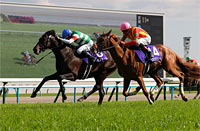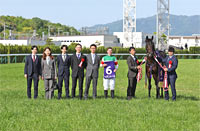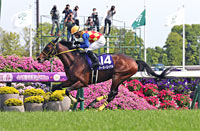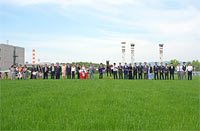Tenno Sho (Spring) (G1) - Data Analysis
Race that determines the strongest stayer
The Tenno Sho (Spring) is contested on a turf course over a distance of 3,200m, making it the longest JRA flat G1 race. Since 2017, race favorites have notched three consecutive wins in the race. Prior to 2017, however, we have to go back as far as 2006 to find a race favorite triumphing (Deep Impact). So what sort of trends can we find in this race that determines the strongest stayer? Let’s take a look by analyzing results from the last 10 years.
Watch previous race
Looking at performances by runners over the last 10 years in terms of their previous race, we find that many runners had previously contested the Hanshin Daishoten or Nikkei Sho. Although runners in these groups accounted for more than half (16) of the Top 3 finishers, their success ratios were not that high. Of the 15 runners coming from the Osaka Hai (including years in which the Osaka Hai was held as a G2 race), six finished in the Top 2, which is also an interesting statistic. [Table 1]
[Table 1] Performance by previous race (last 10 years)
| Previous race |
Performance
[1st-2nd-3rd-4th or lower] |
Win ratio |
Top 2 ratio |
Top 3 ratio |
| Osaka Hai (G1) |
1-1-0-2 |
25.0% |
50.0% |
50.0% |
| Hanshin Daishoten |
3-2-5-47 |
5.3% |
8.8% |
17.5% |
| Nikkei Sho |
2-2-2-46 |
3.8% |
7.7% |
11.5% |
| Sankei Osaka Hai (G2) |
2-2-0-7 |
18.2% |
36.4% |
36.4% |
| Kyoto Kinen |
1-1-1-4 |
14.3% |
28.6% |
42.9% |
| American Jockey Club Cup |
1-0-0-0 |
100% |
100% |
100% |
| Nikkei Shinshun Hai |
0-1-0-0 |
0% |
100% |
100% |
| Diamond Stakes |
0-1-0-14 |
0% |
6.7% |
6.7% |
| Overseas race |
0-0-1-2 |
0% |
0% |
33.3% |
| Other race |
0-0-1-20 |
0% |
0% |
4.8% |
Note: The Osaka Hai (G1; post-upgrade to G1 status) and Sankei Osaka Hai (G2; pre-upgrade to G1 status) were treated as distinct races in the data aggregation.
Runners that finished in Top 3 last time out have the edge
Looking at performances by runners over the last 10 years in terms of finish in their previous race, we observe that 23 of the 30 Top 3 finishers had also finished in the Top 3 last time out. This suggests our primary focus should be on runners that rose to the top in their previous race. [Table 2]
[Table 2] Performance by finish in the previous race (last 10 years)
| Finish in previous race |
Performance
[1st-2nd-3rd-4th or lower] |
Win ratio |
Top 2 ratio |
Top 3 ratio |
| 1st |
5-5-3-27 |
12.5% |
25.0% |
32.5% |
| 2nd |
3-1-3-24 |
9.7% |
12.9% |
22.6% |
| 3rd |
0-2-1-16 |
0% |
10.5% |
15.8% |
| 4th |
0-0-2-12 |
0% |
0% |
14.3% |
| 5th |
1-0-0-13 |
7.1% |
7.1% |
7.1% |
| 6th-9th |
0-1-0-36 |
0% |
2.7% |
2.7% |
| 10th or lower |
1-1-1-14 |
5.9% |
11.8% |
17.6% |
Strong performance by runners that have only entered one race since start of the year
Looking at performances by runners over the last 10 years in terms of the number of races entered from the start of the year, we note that 15 of the 20 Top 2 finishers had contested only one race since the start of the year. In addition, runners that had entered “1” such race achieved significantly higher success ratios than those that had entered “2” or “3 or more” such races. In other words, we should focus on runners that have only entered one race since the start of the year, rather than those that have contested several such races. [Table 3]
[Table 3] Performance by number of races entered since start of the year (last 10 years)
| Number of races |
Performance
[1st-2nd-3rd-4th or lower] |
Win ratio |
Top 2 ratio |
Top 3 ratio |
| 3 or more |
2-0-1-31 |
5.9% |
5.9% |
8.8% |
| 2 |
1-2-4-58 |
1.5% |
4.6% |
10.8% |
| 1 |
7-8-5-53 |
9.6% |
20.5% |
27.4% |
Note: There were no runners that had entered zero races since the start of the year.
Check favoritism in recent non-G1 race
Looking at performances by runners over the last 10 years in terms of favoritism in a recent JRA race other than a G1 race, we find that 15 of the 20 Top 2 finishers had been backed as 3rd favorite or higher in such race. For this race that bestows the highest honor for older horses, we should focus on runners that would be highly favored in a non-G1 race. [Table 4]
[Table 4] Performance by favoritism in recent JRA race other than G1 race (last 10 years)
| Favoritism |
Performance
[1st-2nd-3rd-4th or lower] |
Win ratio |
Top 2 ratio |
Top 3 ratio |
| 1st favorite |
5-4-3-20 |
15.6% |
28.1% |
37.5% |
| 2nd favorite |
1-2-1-15 |
5.3% |
15.8% |
21.1% |
| 3rd favorite |
2-1-1-17 |
9.5% |
14.3% |
19.0% |
| 4th favorite |
0-0-1-19 |
0% |
0% |
5.0% |
| 5th favorite |
1-1-1-12 |
6.7% |
13.3% |
20.0% |
| 6th-9th favorite |
1-2-1-41 |
2.2% |
6.7% |
8.9% |
| 10th favorite or lower |
0-0-1-16 |
0% |
0% |
5.9% |
| No such race entered |
0-0-1-2 |
0% |
0% |
33.3% |
Seek out the winner!
Watch Top 2 finish experience in G1 or G2 races
The seven winners since 2013 had all finished in the Top 2 of a turf G1 or G2 race run over 2,500 meters or more contested within their last three outings. When looking for winners, we should focus on performance in recently contested long-distance races. [Table 5]
[Table 5] Turf 2,500m+ G1 and G2 races contested by last seven winners within their last three outings and in which they achieved a Top 2 finish (last 7 years)
| Year |
Winner |
Race in question |
| 2013 |
Fenomeno |
Nikkei Sho 1st |
| 2014 |
Fenomeno |
Tenno Sho (Spring) 1st |
| 2015 |
Gold Ship |
Hanshin Daishoten 1st |
| 2016 |
Kitasan Black |
Kikuka Sho 1st |
| 2017 |
Kitasan Black |
Arima Kinen (The Grand Prix) 2nd |
| 2018 |
Rainbow Line |
Hanshin Daishoten 1st |
| 2019 |
Fierement |
Kikuka Sho 1st |
(Michio Kawano)
|



















